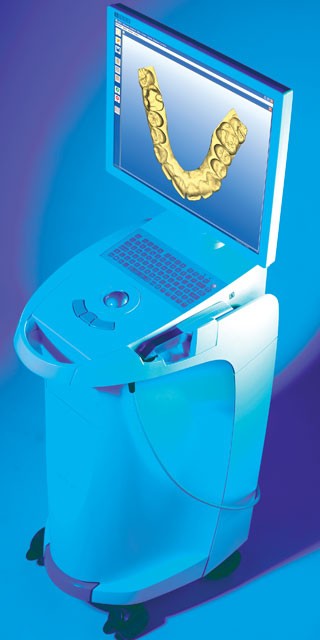
Smiling is good for you. It can relieve stress, reduce blood pressure, make you look younger, lift your mood and contagiously spread to grouchy people. But then, not everyone looks like they just emerged from the set of a toothpaste commercial.
The good news? We’re living in the 21st century. If there’s something about your mouth you don’t like, it can be fixed.
A long-term solution for a wide range of oral insecurities is to get veneers. Veneers are to teeth as makeup is to your face — only a little more permanent. Veneers are also used for restorative purposes, like protecting a damaged tooth from further harm.
“Veneers make your teeth look straighter, give them better color and enhance your smile. As you age, your teeth start to fracture. A veneer can help be a more sturdy covering,” says Tracy Assmus, office manager of Chaffin Dental Care in Spokane.
Veneers are strong, custom-made casings designed to fit over the front side of a single tooth that is fractured, chipped, has worn enamel or is simply the ugly duckling of the mouth and needs to be hidden. If you have multiple teeth with a prematurely aged appearance or irregular spacing, veneers can re-shape teeth, close spaces, permanently whiten and create uniformity of color and symmetry.
“The nice thing about veneers is they’re sturdy, very durable and they keep their color so they won’t stain like a natural tooth,” says Assmus. “You can floss them and treat them exactly as you would a real tooth.”
Chaffin specializes in a brand of veneer called DURAthin. Made of porcelain but thinner than normal, Assmus says this brand is unique because the teeth do not have to be prepped or shaved down. Also common are Lumineers, popular because they can last for up to 20 years and the application process is virtually pain-free. These translucent little wonders don’t require any drilling, can be placed over crowns and bridgework, and are complete in less than three visits.
Price range for veneers can be anywhere from $700 to $1,500 per tooth (depending on what kind you get), so talk to your dentist about which type is right for both your mouth and budget.
If you managed to lose a tooth (or several), Dr. Katherine M. Hakes, DDS, FAGD, of Spokane says implants are usually the best aesthetic alternative. With implants, a small titanium screw is placed inside the jawbone, serving as the replacement root for a new tooth. The screw integrates directly into your jaw, and the bone will grow right around it.
“[Implants] preserve the bone and are most cost-effective over the long term,” says Dr. Hakes.
The replacement tooth that screws into the root will allow you to chew and speak properly, and can last a lifetime if maintained. This makes implants a good alternative to dentures. The process usually produces minimal discomfort, and can take anywhere from a few months to a year.
“The nice part about an implant when you have a missing tooth is that you don’t have the bone loss,” says Assmus. “In the old days people would extract the bone, but with an implant you keep your bone structure.”
If your teeth are ultra-porous and absorb red wine like a sponge, a simple whitening procedure can work wonders. Over-the-counter products with whitening components have been proven to work, but the active ingredient carbamide peroxide must be in contact with your teeth to take long-term effect.
“That is why custom-fitted trays [through your dentist] is the better option than over-the-counter products,” says Dr. Hakes. “In-office whitening is a great way to jumpstart the whitening process.”
While a dazzling grin like this can cost around $400 (which includes your custom-made trays), keep in mind whitening strips taste funny and don’t always stay in place.
“Also,” adds Dr. Hakes, “whitening toothpastes will sometimes have an abrasive to remove external stain, but that is not the same as the effects with the carbamide peroxide.”
For chipped teeth, cracks and small gaps, composite restoration has come a long way since amalgam fillings. Advances in technology have increased the durability of composite resin (a tooth-filling material), allowing composites to bond more seamlessly with the tooth and look more natural.
“If you have a gap between two teeth, your tooth can also be made wider or larger to eliminate the spacing,” says Assmus.
Composites may cost anywhere from $100 to $500, depending on size.
Many dental offices have also begun to use a specialized CAD-CAM (computer-aided design/computer-aided manufacture) machine called CEREC, a device that allows restorative materials like inlays, onlays and crowns to be produced on-site and applied in a single visit.
“Inlays and onlays help to restore the tooth, so when the decay is taken out, that’s what lies over the tooth to cover it,” explains Assmus.
If you have a cusp, or part of your tooth is broken, you could have it taken care of in a single trip if your dentist uses a CEREC machine.
Many dentists in the Inland Northwest also specialize in smile design and offer personal consultations specifically aimed at helping you create the grin you’ve always wanted. So if you’re ready to say goodbye to that snaggle tooth, there’s no time like right now. And that’s something to smile about.















